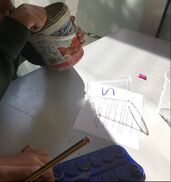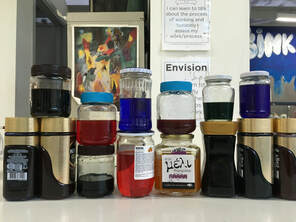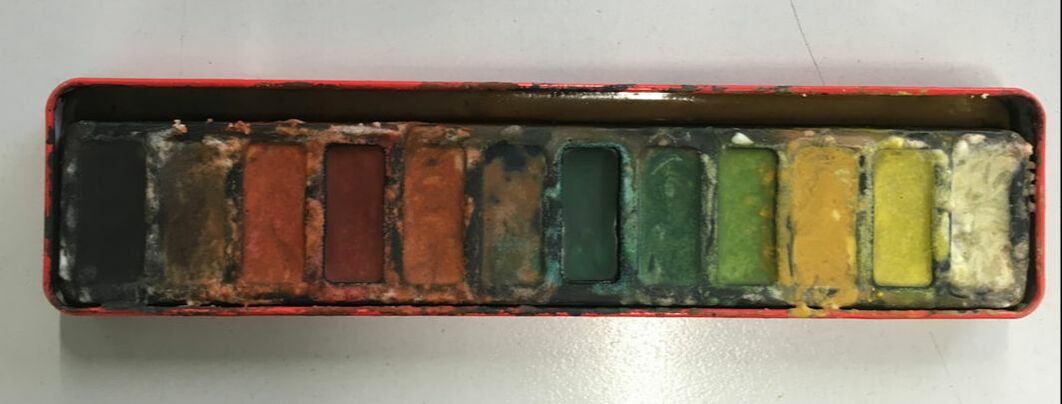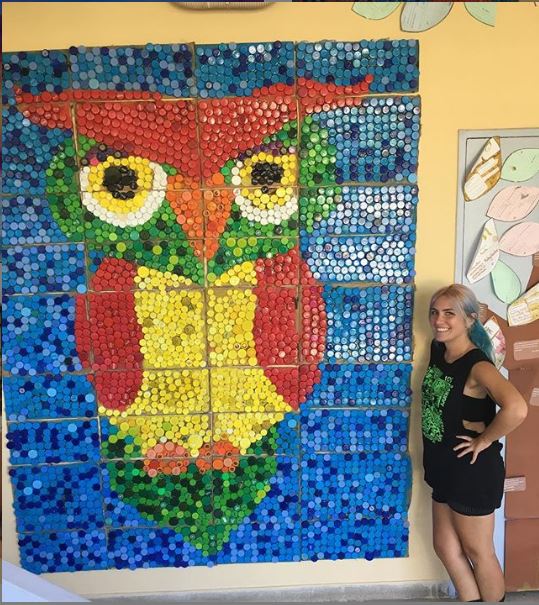This post exists as a part of a move Towards a Sustainable Art Classroom. Click the link to see more upcycled projects and classroom tips.
My students and I both have a love-hate relationship with our watercolors. They love the ease of mixing colors and the creative ways of splashing, blending and layering you can achieve. I love that they are easier to store, set-up and save than liquid paints. They hate that the palettes are easily muddied, and I hate that we run out SO fast, leaving us with dozens of empty, plastic trays.
Since last year, I have been holding on to these empty trays, trying to come up with a good use. I've also been saving the dried out markers to make liquid watercolors, and have been working on a way to turn these liquids into re-usable solids that can refill the empty trays. After many trials and plenty of errors, I finally nailed down a recipe that I was able to use as an interactive and engaging STEAM activity with my fifth grade that would help cut down on our plastic tray waste and get us some fresh and fun colors.
I started with this recipe and then tweaked it to work with the supplies available in my country and my classrooms needs. Below is the recipe with tips, downloads of the observation and instruction sheet for students, photos of the science in action, as well as photos of the finished products.
Since last year, I have been holding on to these empty trays, trying to come up with a good use. I've also been saving the dried out markers to make liquid watercolors, and have been working on a way to turn these liquids into re-usable solids that can refill the empty trays. After many trials and plenty of errors, I finally nailed down a recipe that I was able to use as an interactive and engaging STEAM activity with my fifth grade that would help cut down on our plastic tray waste and get us some fresh and fun colors.
I started with this recipe and then tweaked it to work with the supplies available in my country and my classrooms needs. Below is the recipe with tips, downloads of the observation and instruction sheet for students, photos of the science in action, as well as photos of the finished products.
|
| ||||
Ingredients (per 1 watercolor tray):
- 2 TBSP baking soda
- 1-2 TBSP white vinegar
- 1-2 tsp glucose syrup (corn syrup)
- 2 TBSP corn flour (corn starch)
- eyedroppers of homemade liquid watercolors (or food coloring)
- empty watercolor palettes - even ones that still have bits of paint left!
-Sticks or spoons to stir
-Bucket for mixing
Prep
To make things easier, and more precise, I pre-measured each ingredient in separate cups, as well as a set of eyedroppers for each pair/group of students. I did not indicate what each material was (but rather labeled with numbers) so that students would be able to hypothesize on their own.
Procedure
1. In the mixing buckets, combine ingredients 1 and 2 (the baking soda and vinegar) and STIR (this is important). Have students note their observations on their observation sheet.
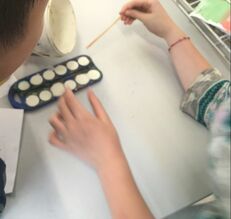 This tray is a little too full
This tray is a little too full 3. After the ingredients are evenly mixed, you should have a thick, syrupy solution that is liquid when stirred, but starts to solidify when untouched (effects of corn flour!) Start to distribute the solution evenly in the watercolor tray slots. Try not to fill the holes all the way, you need to leave space!
4. Using the eyedroppers, add 2-3 drops of color in each slot. Experiment with color combinations! MAKE SURE you STIR STIR STIR as you add! You may notice the mixture "absorbs" the color and you will need to add more.
5. Mix each cell one last time to ensure the solution is saturated with color. Then set the tray aside uncovered to dry overnight.
Results
Our results varied, but was largely successful, especially after the second go-round. We noticed that the constant stirring was crucial to a good result.

